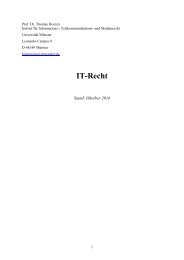3d4yVkKMl
3d4yVkKMl
3d4yVkKMl
Create successful ePaper yourself
Turn your PDF publications into a flip-book with our unique Google optimized e-Paper software.
- 60 -<br />
204. Japan refers in particular to incidents of sabotage during the 2008-2009 season (the<br />
ramming of vessels in February 2009 and the throwing of bottles of acid at Japanese vessels), the<br />
unauthorized boarding of the vessel Shonan-Maru in February 2010, which resulted in the<br />
withdrawal of that vessel from the fleet for the remainder of the 2009-2010 season for crime scene<br />
investigation, and additional harassment during the 2012-2013 season. Japan notes that the IWC<br />
has condemned such violent sabotage activities in a series of resolutions adopted by consensus.<br />
205. Australia takes issue with Japan’s account of the reasons for the gap between target<br />
sample sizes and actual take. Australia does not dispute that the decision to take no humpback<br />
whales was made in response to a request from the Chair of the IWC, but points out that this was a<br />
political decision, not a decision taken for scientific reasons. With respect to fin whales, Australia<br />
emphasizes the undisputed fact that Japan’s vessels are not equipped to catch larger whales. As to<br />
minke whales, Australia points to evidence that, in its view, demonstrates that actual take is a<br />
function of the commercial market for whale meat in Japan, not the factors identified by Japan.<br />
According to Australia, Japan has adjusted the operations of JARPA II in response to lower<br />
demand for whale meat, resulting in shorter seasons and fewer whales being taken. Australia also<br />
invokes press reports of statements by Japanese officials indicating that JARPA II’s research<br />
objectives do not actually require the amount of lethal sampling described in the Research Plan and<br />
can be accomplished with a smaller actual take.<br />
206. Taking into account all the evidence, the Court considers that no single reason can<br />
explain the gap between the target sample sizes and the actual take. As to humpback whales, the<br />
gap results from Japan’s decision to accede to a request from the Chair of the IWC but without<br />
making any consequential changes to the objectives or sample sizes of JARPA II. The shortfall in<br />
fin whales can be attributed, at least in part, to Japan’s selection of vessels, an aspect of the design<br />
of JARPA II criticized by the expert called by Japan (see paragraph 180 above). As to the fire on<br />
board a ship in one season, Japan did not provide information regarding the extent of the damage or<br />
the amount of time during which the vessel was compromised. The Court considers it plausible<br />
that sabotage activities could have contributed to the lower catches of minke whales in certain<br />
seasons, but it is difficult to assess the extent of such a contribution. In this regard, the Court notes<br />
that the actual take of minke whales in the 2006-2007 and 2007-2008 seasons was 505 and 551,<br />
respectively, prior to the regrettable sabotage activities that Japan has brought to the Court’s<br />
attention. In this context, the Court recalls IWC Resolution 2011-2, which was adopted by<br />
consensus. That resolution notes reports of the dangerous actions by the Sea Shepherd<br />
Conservation Society and condemns “any actions that are a risk to human life and property in<br />
relation to the activities of vessels at sea”.<br />
207. The Court turns next to Australia’s contention that the gap between the target sample<br />
sizes and the actual take undermines Japan’s position that JARPA II is a programme for purposes<br />
of scientific research. Australia states that it welcomes the fact that the actual take under JARPA II



